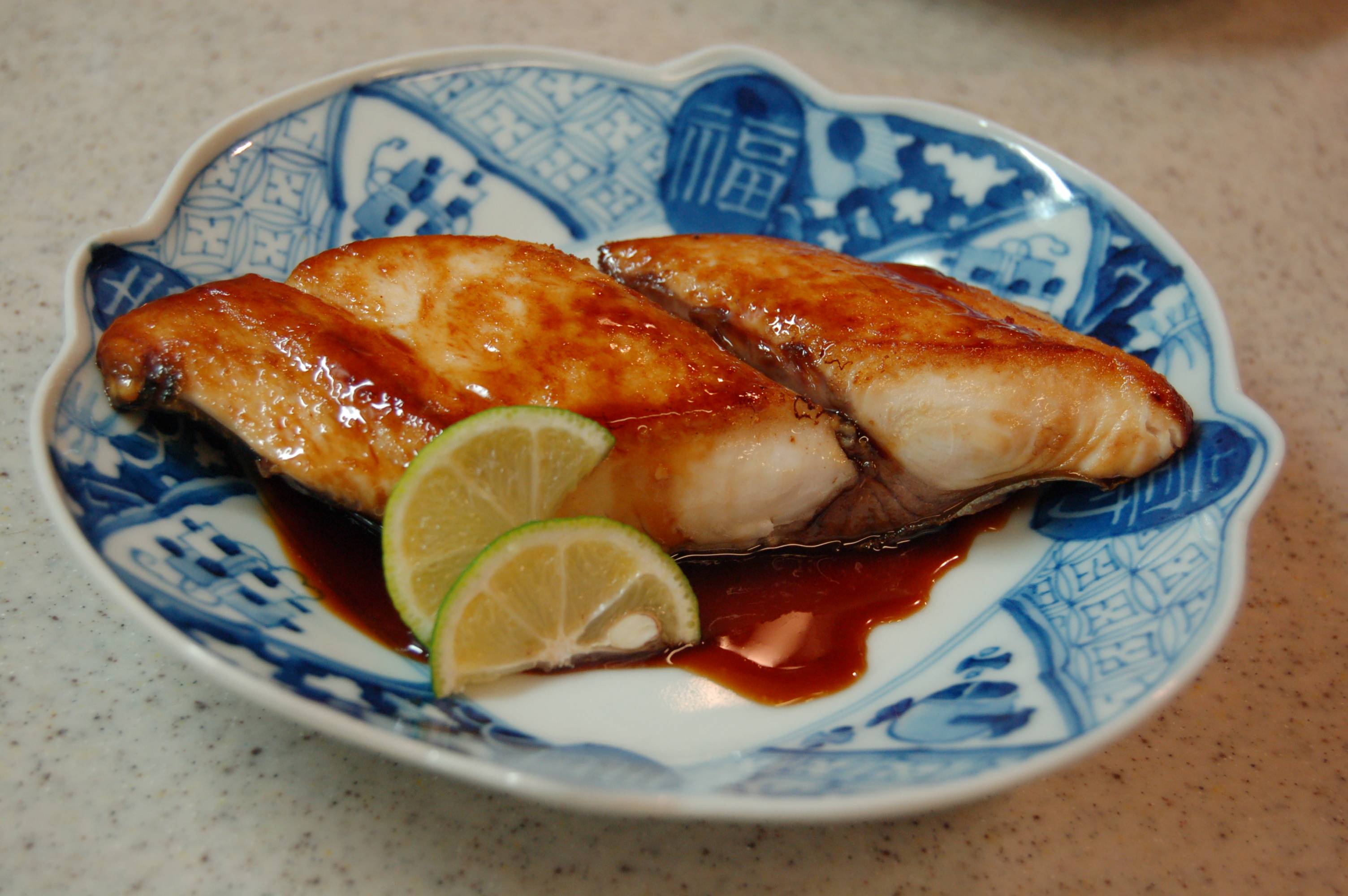When I first embarked on the study of Japanese, kanji seemed more intriguing than intimidating. I was especially attracted to those characters with radicals (components) that provided clues to their meaning.
For example, the grass radical crowns the kanji for many vegetables, shrubs and flowers, and you’ll see a speech radical for things like opinions and language. When the fish radical is paired with the kanji for spring, the resulting reading is “sawara,” which means Spanish mackerel. The reason is because this fish is at its most luscious in the springtime, prepared teriyaki-style.
Searing (yaki) and then glazing (teri) is a quick way to prepare succulent fish fillets on the stovetop, and oily fishes such as mackerel, salmon and yellowtail are especially well suited to this treatment. I like to keep a jar of the glaze on hand to jump-start cooking on busy days. Since the glaze keeps for a month if refrigerated, you can easily double or triple the quantities — just keep the proportion of ingredients: one part sugar (or other sweetener such as mirin or honey), two parts sake and three parts soy sauce. If you like you can accent the basic glaze with flavors such as ginger (juice extracted from a knob of grated ginger), citrus (zest from lemons and oranges) or garlic (crushed to a paste).



















With your current subscription plan you can comment on stories. However, before writing your first comment, please create a display name in the Profile section of your subscriber account page.